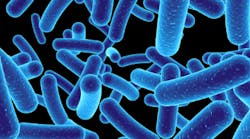Dr. Richard H. Nagelberg talks about a study published in the Journal of Oral Microbiology that examined the bacteria present in healthy coronary artery tissues from patients with atherosclerosis. The results found P. gingivalis to be present in the majority. Dr. Nagelberg explains the questions that this presents as well as how salivary testing fits in.
The Journal of Oral Microbiology published an interesting study that examined the bacteria present in healthy coronary arteries. (1) The objective of the study was to establish detailed oral microbiome profiles of clinically healthy coronary and femoral artery tissues from patients with atherosclerosis (arteriosclerotic vascular disease or ASVD). A total of 230 bacterial species were detected in coronary arteries, and 118 species were detected in femoral arteries. The samples were obtained from patients with atherosclerotic cardiovascular disease (CVD) who underwent coronary or femoral artery bypass surgery. Porphyromonas gingivalis (P. gingivalis) was by far the most abundant species, representing nearly 80% of all bacterial species counts.One of the conclusions was: “Overall, the vastly predominant presence of P. gingivalis in clinically healthy arteries observed in this study is in line with the concept that P. gingivalis possesses unique properties to invade the arterial walls to survive intracellularly and escape the immune system.”
There are still a number of properties yet to be discovered, including how long the bacteria can survive within the arterial tissue, whether inflammation precedes or follows bacterial colonization, and how colonization changes during the course of ASVD, among others.
The final conclusion stated: “This study provides insight into the presence and types of bacteria found in clinically healthy artery tissue. These species may be associated with the initiation and/or exacerbation of atherosclerosis, with or without any role in causation.”
The study looked for the presence of 600 different bacterial species; 245 species were detected in coronary and femoral arteries combined. Other bacteria detected included a number of species of Porphyromonas, Escherichia, Staphylococcus, Pseudomonas, and Streptococcus. Of interest to dental professionals is that of the 245 bacterial species detected in healthy coronary and femoral arteries, the vast majority were P. gingivalis, a highly toxic, common oral pathogen. With the potential ability of P. gingivalis to cause or exacerbate ASVD, it is vitally important to identify and reduce the population of P. gingivalis.
Dental professionals are in a unique position to reduce bacterial populations within the oral cavity. It all starts with identifying the bacteria through salivary testing.
READ MORE OF DR. NAGELBERG’S BLOGS . . .
Reference
1. Mougeot J-LC, Stevens CB, Paster BJ, Brennan MT, Lockhart PB, Mougeot FK. Porphyromonas gingivalis is the most abundant species detected in coronary and femoral arteries. J Oral Microbiol. 2017;9(1): 1281562. doi: 10.1080/20002297.2017.1281562.








